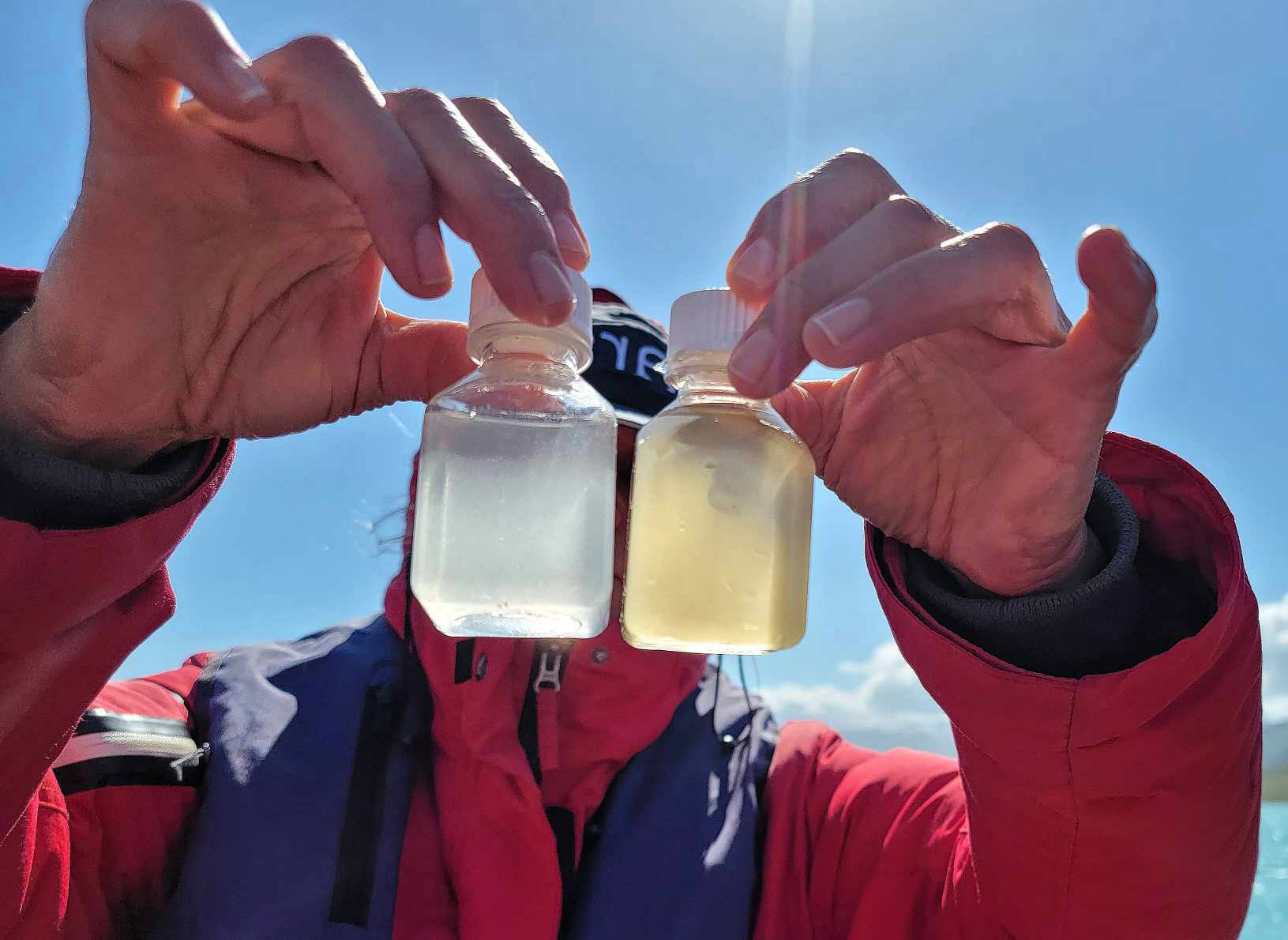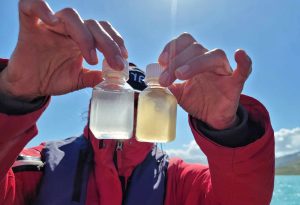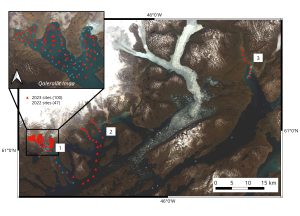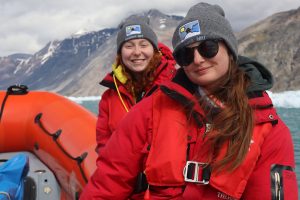
Quantifying Rapidly Changing Tidewater Glacier-Fjord Systems in South Greenland
Expedition Location: Qalerallt Imaa, South Greenland
Expedition Dates: June 11, 2023 – July 02, 2023
Field Team Members: Sydney Baratta, Kristin Schild, Lee Karp-Boss, Allie Berry
Funding Support: The Robert and Judith Sturgis Family Foundation, NSF SAUNNA NRT, and the University of Maine Graduate Student Government
Background and Significance:
The Greenland Ice Sheet (GrIS) has undergone a six-fold increase in mass loss since the 1980s, with 40 – 60% of annual mass loss primarily occurring at its margins through tidewater glacier discharge. Fjords connect tidewater glaciers to the ocean and serve as a critical passageway in heat transport to a tidewater glacier terminus and the movement of glacially eroded, nutrient-rich sediment to the ocean. As atmosphere and ocean temperatures are projected to increase, the amount of meltwater, solid mass loss, and glacially eroded sediment entering the fjord are likely to change, which subsequently impacts fjord circulation, nutrient input, water turbidity and consequently primary productivity. Additionally, the transition of glaciers from tidewater to land-terminating is likely, leading to a fundamental difference in fjord dynamics as solid mass contribution (icebergs) disappears and sediment-rich meltwater will enter the fjord at the surface rather than at depth. Concerningly, the impact of this change in forcing on fjord circulation, nutrient input, and primary productivity has not been well studied.


Field Report:
In June 2023, we returned to Qalerallit Imaa, a south Greenland fjord that abuts tidewater glaciers actively transitioning to land-terminating, making this an ideal location to study the effects on fjords. We sampled 100 locations by zodiac in Qalerallit Imaa and surrounding fjords that differ in environment (Fig. 2). Our sampling efforts included suspended sediment concentrations, temperature, salinity, chlorophyll fluorescence, light penetration, and a qualitative glimpse at phytoplankton abundance and diversity. We use our field measurements as ground truth points to calibrate satellite imagery-derived values, which will be used to expand the sediment plume record over a larger spatial and temporal resolution in the south Greenland region. By establishing relationships between suspended sediment concentrations, hydrography, and biology, alongside the expanded sediment plume record, we can quantify how fjords are physically and biologically responding to retreating tidewater glaciers from 1992 – 2023.


